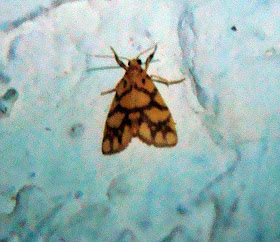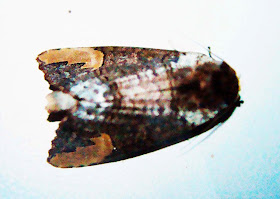If I freeze your beauty and wear it on my heart,
I rob Nature, her grace apart; a star dies, so with art.
I rob Nature, her grace apart; a star dies, so with art.
Dr Abe V Rotor
Living with Nature School on Blog
Art of Camouflage
Your artful disguise
makes you invisible and free;
Nature's given prize
of camouflage and mimicry.
of camouflage and mimicry.
Footprint Moth
If these two sets of footprints
lead to opposite directions,
did you depart when I needed you most?
What goodness did I lack?
"My child, you were alone
and lost and I brought you back."
Kite Moth
It is not only that birds follow the sun
that the sky is filled with colors and laughter;
it is your body symmetry copied for fun,
that children believe they own the sky
and make imagination their best teacher,
even in their dreams to fly.
STOL Moth
If your wings are for short takeoff and speed,
and your long antennae and infrared eyes
defy the darkness of night, then I believe
someone has copied you in steel that flies.
Jade Moth
If I freeze your beauty
and wear it on my heart,
I rob Nature, her grace apart;
a star dies, so with art.
False Eyes
Whose eyes these are, real or just mask?
Why grotesque and cold, the children ask?
Unmoved, you simply sleep and wait 'til dawn,
and they ask again if they were your own.
Stealth Moth
Man copied you but for another purpose;
peace and quiet you live, his intent is not,
but to rule the sky fiery by day and night;
cheer up, for imitation will never be right.
Falcon Moth
You are on the ceiling all alone
and the toad looking up
thinks of you a falcon;
in make-believe it's good to be up
with reverse role as predator;
everything's prey on the floor.
Hidden Mirror on the Wall
No, it's not Paleolithic painting,
but hidden mirror on the wall:
Bless you creature in slumber waiting
the light of the world to fall,
then seek a beacon in the night
where a pen draws its might.

Atlas Moth
Thought you could put one on Hercules,*
from the burden of the world you're free;
so thought too, the dinosaurs in spree;
bigness is no guarantee no less;
birds fly on wings and hollow bones,
flies need not four wings but two,
none but the water strider glides best -
be humble, bigness is weakness, too.
* In Greek mythology, Atlas played trick on Hercules to take
over him carry the globe; but Hercules was smarter,
and the task fell back on poor Atlas.
Ghost Moth
From visibility to invincibility;
first, keep low like ice in thaw;
then, keep shape with the scape,
wear some spots, add many dots;
last, you're ghost to any host.
Chameleon Moth
Where comes the trigger I know
are hormones by signal flow,
masking colors, painting a view,
to match a perfect scenario.
Lion Moth
You look like a lion without mane,
and that's why you look tame;
how in the world can you scare
with your lonely, friendly stare.
Prominent Moth
(How can you be prominent?)
Who would like you a frass lying still on crust,
feigning inanimate to pass the day in fast.
Vesper Moth
You, who keep the faithful in vigil,
wearing a white stole over a holy robe -
would being pious save you long?
Beaks and jaws simply don't care,
much less the order you belong
Tiger Moth
It is the tiger look that you seem respected,
else the mourning signal you send;
but whose view but the cruel beak instead
whose judgment lies your fateful end.
Tapestry Moth
What you designed, man now claims his own,
yet it was your ancestors' pride before his dawn;
conditionally you gave, for a prize you crave,
by copying his art you may be saved.
Poison Eater Moth
Moth feeding on the nectar of Lantana (Lantana camara)
a poisonous and obnoxious plant
Moth feeding on the nectar of Lantana (Lantana camara)
a poisonous and obnoxious plant
What secret have you on hemlock you thrive,
which once robbed the world of a great mind?
Come to where there's li'l left of faith and pride;
bless you little moth, a messenger divine.
Battered Moth
Wings chipped, scales rubbed,
antennae curled, finish scrubbed;
eggs laid, leg cut, coat creased,
grounded, mission accomplished.
Wood Moth
You look beaten like an old wood,
weathered by rain and tear and sun,
yet full of life and in good mood
like a seasoned timber's stand.
Klan Moth
With robe and hood you come and pause
in dignity, a racist you hide;
reminder of the Fuhrer's cause,
the ignoble Ku Klux Khan's pride;
but if you're a true ambassador,
please bring tidings to every door.
Continued to Part II


















































